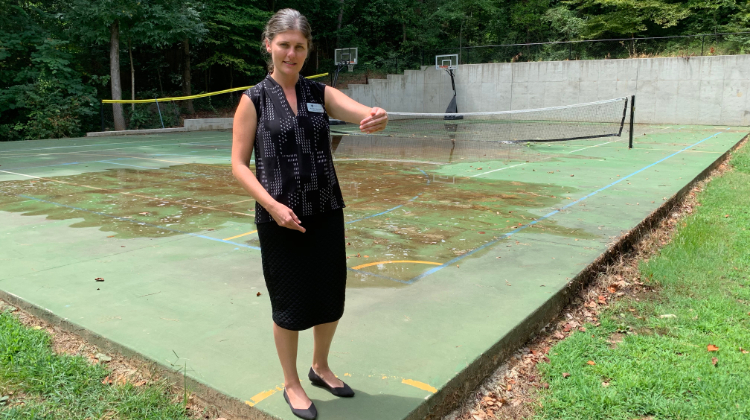Upon the Kendeda Building’s completion, we asked a few prominent change leaders in sustainability and other fields to offer their insights. At the heart of all their columns: What should and can be done to encourage regenerative design and construction. Read more of these Building Thought Leader columns and other content tied to completion of this landmark for sustainability in the Southeast here.
There’s a lot of power in the word “why.”
Midtown International School, where I am founder and head of school, committed this year to regenerative design for all of our future buildings. I love the questions I get when I talk about it. They almost always start with some version of this:
Why would such a small school take on such a huge project?
Over time, the answer, in the form of another question, has forged itself in our school culture: How could we not?
We know that a regenerative building can be built in the South. The Kendeda Building’s team has done that great service for us. So how can a school, being in the business of the future, say, “No, thank you, but we are going to just build to code”?

Midtown International School serves globally-minded, gifted learners in Atlanta. At our core, we believe that when people who have exceptional ability are given opportunities and an environment to find, create and fulfill their potential, they become powerful change agents for our world throughout their lives.
With five times as many students as we had just five years ago, our school’s rapid growth demanded that we begin working on a new master plan in the fall of 2018. Working with a team of stakeholders and architects, we quickly discovered that our values as an organization aligned perfectly with those expressed in the Living Building Challenge. It felt as though the standard had been created just for us.
I remember the look on the faces of my colleagues in the moment we collectively committed to seeking Living Building Challenge certification for our 35,000-square-foot expansion: It was unwavering and passionate. We all agreed that we must stand up for our shared vision of the future and the future of our students.
These feelings were only deepened when we toured the Kendeda Building construction site in March 2019. Every member of the team came up to me that day, bubbling with energy and a collective sense of “we can really do this!”
To be sure, each day brings different challenges. Running a school requires very different organizational capacities than building a school. Putting together the right team of experts to manifest our values and beliefs has been deeply rewarding, though not everyone we meet jumps on board.
Shortly after committing to regenerative design for all future construction, we met the wonderful leadership team for the Kendeda Building. Team members have been gracious and generous with time and support, but they spent much of our initial time together explaining just how formidable Living Building Challenge could be. And they weren’t alone in trying to dissuade us. A short while later I found myself standing with two thoughtful and reputable individuals in the construction industry, and they told me we were just too small to build a living building.
That makes sense: It’s easy to look at the Kendeda Building, with all of its beauty, legacy, and regenerative goodness and think, “This is only possible because the behemoth of Georgia Tech brought its resources and brilliant minds to bear on its creation.”
It’s easy to think that regenerative buildings are only possible for organizations and people with plenty of capital to spend as they navigate the learning curve of innovation.
It’s easy to believe, as you meet the capable, engaged leaders of the Kendeda Building team, that they could do it only because they know the recipe for making such things possible.
It’s easy to see regenerative design’s leapfrogging changes in how we think about buildings and their relationship with human beings and our planet as exclusive, not for the little guys, not for those who want to make a change but feel too small to make a difference.
It’s easy…but it’s not right.
At MIS we see it as our imperative to be a part of the solution. As a community we have decided to stand up for equity, humanity and the future of our planet. We have embraced the challenges that come with those choices, too, hoping that our students will see our decisions and demand no less of their future schools, universities, workplaces, and of course, themselves.
Regenerative design is for all of us, and lives on beyond us — not just in the building but in the changed lives of the people who inhabit it. For us, the power of why comes not with “why would you choose regenerative design,” but, rather, “why would you not?”
Midtown International School Head of School Ande Noktes has 23 years of experience in education and educational administration. Her many years abroad and multicultural family at home have reinforced her passion for globally-minded education in the strategy and day-to-day practices of the school. Noktes holds a BA in Liberal Arts and an MA in Philosophy; is all but dissertation in her doctoral degree; and most recently completed her MBA at Emory University. Her strategic approach to organizational design and culture applies current research in neuroscience, business, ethics, and education to all facets of the stakeholder experience with the school.
PHOTO AT TOP: Head of School Ande Noktes explains how one version of Midtown International School’s expansion plans would involve replacing a tennis court. Photo by Ken Edelstein.


